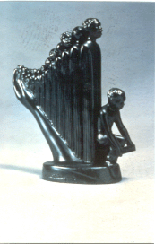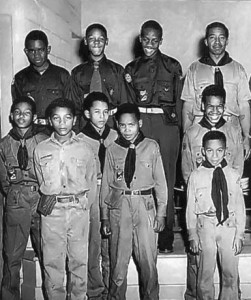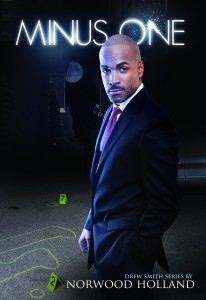Diversity and Tolerance
September 18, 2010
Many believed the election of an African American President ushered in the new age of a post racial American society, one of diversity and tolerance with global impact. Well into Obama’s first term we have witnessed anything but tolerance and acceptance of cultural, racial and religious differences. Unfortunately society’s ingrained prejudices will likely take generations to eradicate. It took 400 years to make racial equality a matter of policy in the United States. A major battle tackling racism came on the education front with the 1954 Brown decision outlawing segregated schools eliminating an impediment to economic progress for many and making great strides in American society. Through desegregation school kids actually experienced diversity and tolerance in their everyday lives. Mere association alone cannot remove entrenched ideology in the war on racism and xenophobia, but the education battlefront remains the best theatre. Teaching tolerance and diversity as part of the curriculum has proven to be an effective strategy in targeting early childhood development. Teaching tolerance in elementary schools reduces the incidence of hate crimes, racism, discrimination and bigotry.
Similarly on the march of progress religious intolerance remains another battlefront. How do we educate the public to understand and respect the various religions of the world? The Establishment Clause of the First Amendment prohibits the establishment of a national religion by the Congress or the preference of one religion over another, and at the same time insuring religious freedom. It further outlaws teaching religion or what is known as “excessive entanglement” in the public schools. Public schools did much to eradicate racial discrimination but as for religious instruction there is a laissez-faire policy. When it comes to educating the public the society’s youth remains the better students. By adulthood bias and prejudice become entrenched and are less likely to be questioned.
In 1992, the American Bar Association’s Young Lawyers Division (YLD) launched four Tolerance Education pilot projects in elementary schools, middle schools, high schools, and colleges throughout the country. The ABA offered a Strategy for Teaching Diversity and Tolerance in schools recognizing children are aware of racial and gender differences at a very young age, and by age twelve they have formed stereotypes. In fact, recent studies show that tolerance education is most effective between the ages of four and nine years. Therefore, it is important to teach tolerance to young children and continue reinforcing the message over time. Age-appropriateness is involved in the creation of the different curricula that educators have developed. For instance, part of the curriculum includes classroom exercises from newsletters and newspaper sections directed toward younger audiences. Additional methods include short theatrical productions and role-playing exercises. Such programs give students a greater understanding of discrimination and prejudice.
Why not incorporate Diversity and Tolerance as part of a civics curriculum nationwide? Granted, States like Texas where political ideology controls curriculum would probably oppose it. Nevertheless its certain, diversity builds a stronger society, tolerance advances democracy, and compassion is essential for a better world.
Raising Black Boys: Back To Basics
September 3, 2010
- Boy Scout Troop 107, Steeltown, PA
When I entered the fifth grade I was finally old enough and couldn’t wait to join the Boy Scouts. The uniforms were cool and scouts got to go camping and learned all sorts of neat things. I was ready on that early autumn Tuesday evening. My father chaperoned me to my first meeting. Briefly interviewed by the Scout Master this 10 year old boasted of his ability to recite the oath and the law. The mission of the Boy Scouts of America is to prepare young people to make ethical and moral choices over their lifetimes by instilling in them the values of the Scout Oath and Law.
The Scout Master was impressed with my precocious gung ho attitude while my father concealed his embarrassment mingled with pride. He knew my choosing this experience was important to me and he respected it. As a young boy few things interested me and I remember the excitement at the arrival of my monthly Boy’s Life magazine; picking out my first uniform at the J.C. Penny’s. By rout memory I learned the Scout law: to be Trustworthy, Loyal, Helpful, Friendly, Courteous, Kind, Obedient, Cheerful, Thrifty, Brave, Clean and Reverend. I now realized these lofty ideals would help shape my character and outlook and resonating throughout my life.
In recent summers I witness throngs of Boy Scouts touring the city during the annual summer jamborees at AP Hill. I can’t honestly say I remember seeing an African American scouts among the hundreds. Back in my day at the annual exposition held at the Armory there were several local African American troops with exhibit booths. I wonder how many African American Boy Scout troops exist across the states today–probably not many. Things are different now. I belonged to an African American troop at Hopkins House in Alexandria. The Boy Scouts like every other American institution has a history of discrimination and segregation.
Since the civil rights movement and integration African American communities have undergone a transformation. The village concept of the community’s sense of solidarity forged by a history of Jim Crowism and segregation all built around churches and schools have been lost. Looking back the Boy Scout experience was fundamental to my education. Today’s kids may be consumed with skate boars, video games, sports, and hip hop music all of which might offer some valuable training. But what builds character?
Around age ten is a critical time in a boy’s life. Some have the idea that raising boys requires less nurturing than girls; the notion that boys will somehow take care of themselves. An intended benefit of nurturing is the building of character a task the communities have been neglecting evidenced with more young men in jail than college or gainfully employed. We have somehow lost our boys to the transformation. We can regain them and save the future by getting back to basics. What better curriculum than the Boy Scout laws.
A Good Day
June 25, 2010
Sunday past was Fathers Day. Unlike many others my father is still with us and we’re still building memories. I’d like to share this one: 1956 I was five years old. The family piled into the car on a Sunday drive from Gum Springs into the District of Columbia to visit my maternal great grandparents. A pony ride operated at the intersection of Richmond Highway and Fort Hunt Road. Little kids were lined up giddy with anxious excitement. The idea of taking his three kids on a pony ride delighted my father, and he asked if we wanted to. My brother and sister spoke up willingly. I had reservations. My father parked and along with my mother we waited in the car and watched him approach the attendant. Moments later he returned and started the car. My mother asked what happened. He responded, the man said they didn’t allow niggers to ride their ponies. We drove off everyone in silent wonderment. I can’t tell you how relieved I was at not being mounted on a beast and paraded about the smelly stable grounds. Though I had a cowboy outfit, I never wanted to be a cowboy. Like I said, it was a good day to be a nigger –for me at least–not so for my father. Can you imagine the indignities our forefathers endured?
Stony the road we trod,
Bitter the chastening rod,
Felt in the days when hope unborn had died;
Yet with a steady beat,
Have not our weary feet
Come to the place for which our fathers sighed?
We have come over a way that with tears has been watered,
We have come, treading our path through the blood of the slaughtered,
Out from the gloomy past,
‘Til now we stand at last
Where the white gleam of our bright star is cast.

Sculpture: Lift Every Voice and Sing by August Savage, 1939
A Washington Tradition Back to Segregation
April 5, 2010
Last week Eugene Allen died at age 90. The White House butler for 8 presidents from 1952 to 1986 started out as a “pantry man” and dishwasher moving up to Maitre d’. Allen probably took to his grave a host of inside stories of White House goin’ ons, juicey tidbits whispered in confidence among the colored help. No doubt Allen was often an active planner and participant in a White House tradition taking place today, the Easter Egg Roll, the biggest annual White House gathering. He was there when Mamie Eisenhower decided it was time to desegregate the event.
African American children were not allowed inside the White House gates, a tradition dating back to 1878 when Rutherford B. Hayes– the same President who ended Reconstruction–hosted the first White House Easter Egg Roll. Occurring on Easter Sunday a workday for most of Washington’s Black servants who even if possible couldn’t afford to take off and chaperon their children to the public event. Two years later the Smithsonian began what became another tradition believed to be a direct response to the White House practice making African-American children persona non grata.
To this day on Easter Monday D.C.’s children of color still gather at the Smithsonian National Zoo where “ice cream, food and Easter egg hunts await them.” As a child growing up here I remember Washington as a largely segregated city in the 1950s. Like Eugene Allen I’ve seen much change. African Americans coming and going through White House gates are a common occurrence–only now their presence is no longer restricted to the back of the house.





